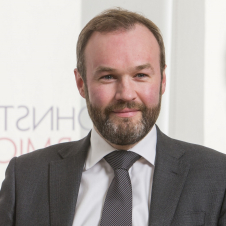Be careful if you are thinking of cashing in a pension early!
There is technically no limit to how much can be saved into a pension (or pensions) in a tax year, however there is a limit that exists in respect of the total that can be contributed which will benefit from tax relief and where no tax charge will result.
This limit is called the Annual Allowance and is presently £40,000. The Annual Allowance includes personal contributions, any employer contributions, and contributions made by someone else on behalf of the individual, e.g., a grandparent. The Annual Allowance is the total tax relieved amount that may be paid into one or more pension plans in a tax year.
However, there are also some situations where the amount that an individual will benefit from tax relief on will differ from the Annual Allowance. If an individual earns less than £40,000 per annum, their tax relievable contribution will be restricted to whatever their earnings are. For example, an individual earning £30,000 per annum would only receive tax relief on contributions up to this amount.
Also, individuals deemed to be higher earners with income over £200,000 per annum may see the amount they can contribute and receive tax relief on, reduced. This is known as the Tapered Annual Allowance and could reduce to as little as £4,000 depending on individual earnings.

The pitfall of taking pension benefits early
The Money Purchase Annual Allowance (MPAA) is applicable in certain situations when you start to withdraw income from your pension arrangements. In all applicable circumstances the Money Purchase Annual Allowance is £4,000.
Given that pension benefits can currently be taken from age 55, it is feasible, and perhaps not too uncommon, that people who are working and continuing to build up their pension pots, could also look to access some historic pension arrangements.
It was this situation that I came across recently in discussion with a client.
In conversation it arose that they were approaching their 55th birthday and were aware they could access their pension. There was a certain wedding anniversary looming, and they had started to plan a bigger than normal holiday to celebrate this, as well as to make up for the last couple of years of travel restrictions! Their son had also been accepted to university so some funding in this direction would also be useful. Some other minor home improvements were also in their thoughts.
They are a member of their current employer’s pension scheme with contributions of £10,000 per annum being made between them and their employer.
In addition to the current employer’s scheme, there were also two historic pension arrangements they held from spells with previous employers. These plans were valued at around £11,000 and £16,000 and they had contacted the scheme providers to make enquiries as to how they could withdraw the funds to pay for the various outgoings.
The pitfall is this, if they had taken the benefits from one or both plans entirely, they would have inadvertently triggered the Money Purchase Annual Allowance, thereby being limited to contributions of £4,000 (tax relievable) between the date benefits were taken and the end of that tax year. And limited to this amount every tax year thereafter.
Impact of triggering
Assuming the benefits had been taken and contributions to the current scheme continued at their present level, then they would have exceeded the MPAA by around £6,000 in the next full tax year i.e. the difference between the £10,000 contributions and the £4,000 MPAA.
This would lead to a tax charge on the £6,000 excess contributions.
To calculate how much this charge would be, the £6,000 excess contribution would have been added to their income and taxed at their marginal rate. In this situation, as they were already a higher rate taxpayer, the full £6,000 would have been taxed at 41% (higher rate in Scotland) resulting in a charge of £2,460.
Another consequence of taking the benefits when they turned 55 would have been paying tax at the higher rate on everything over the tax-free lump sum. If we combined the two pension amounts together to calculate this, they were potentially going to fully cash in two pensions of £11,000 and £16,000 = £27,000. They were entitled to take 25% as tax free cash giving them £6,750. The remaining £20,250 would all have been taxable at 41% resulting in tax deducted of £8,302.50.
By leaving the pension in place until they retire and becomes a basic or intermediate rate taxpayer then they will only pay 20% or 21% respectively depending on actual future income levels. Assuming even that they paid 21% this would mean tax of £4,252.50 which is a saving of £4,050 against what they would have paid now.

When the benefits are taken, the pension scheme administrator issues a statement confirming this and the individual would also need to advise any schemes in which they are still accruing benefits.
Failure to do this within the required timeframes could result in a fine of £300 and daily penalties of up to £60 thereafter.
There would also be the longer-term damage on accumulating pension savings given they would be unable to benefit from tax relief on the pension contributions at the higher level they were previously making, or indeed the ability to increase these in future years giving the MPAA being effective for evermore. This in itself would have been very damaging as they would have lost tax relief at the higher rate on £6,000 contributions for the next 10 years (they planned to retire at 65). Effectively £6,000 x 40% is £2,400 x 10 years = £24,000 tax relief!
Our final thoughts
The rules around pensions can be complex and as we have seen, even innocently taking benefits from what was thought by the individual to ‘just’ be an old pension can result in some fairly costly implications. Below, we highlight some of the key points to think about when considering this option:
- Not all situations where benefits are taken will result in the Money Purchase Annual Allowance being triggered. However, I would encourage anyone considering taking benefits to seek the appropriate financial advice.
- Bear in mind also that the pension scheme administrators cannot provide this financial advice. Asking them how to cash in a pension pot will result in being told just that, with no advice given around the individual circumstances.
- When adding up the financial cost of accessing what were felt to be relatively minor pension savings, the cost of advice can certainly add value to one’s personal situation.
Get in touch
If you would like to discuss any of this further, please don't hesitate to get in touch with myself or a member of our Wealth team.
Disclaimer: Johnston Carmichael Wealth Limited is authorised and regulated by the Financial Conduct Authority.
Tax reliefs and allowances are those that apply at April 2022 and are subject to change in the future. The benefit of these to an individual are dependent upon your personal circumstances.
This article if for information purposes only and should not be construed as an individual recommendation.
While all possible care is taken in the completion of this blog, no responsibility for loss occasioned by any person acting or refraining from action as a result of the information contained herein can be accepted by this firm.

